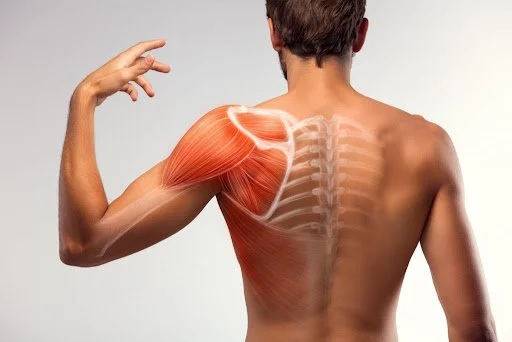What are muscle strains?
Muscles are strained (or torn) when some or all of the muscle fibres fail to cope with the demands placed upon them. Muscle strains are most commonly associated with sporting injuries – typically when either accelerating or decelerating suddenly. Activities that require higher speeds or of a stop-start nature tend to produce a higher number of muscle strains. Muscle strains are also very common at the workplace, during activities of daily living and with incidents such as falls/slips.
All strains involve the tearing of a number of fibres of the muscle, evoking both pain and swelling. Tears are graded from 1 through to 3 in terms of their severity. The most common sites of muscle strains tend to be muscles that cross 2 joints, e.g. the hamstrings, calves, quadriceps, adductor (groin) muscles but can occur in almost any muscle in the body.
What can I do if I strain a muscle?
An accurate diagnosis, early management and specific rehabilitation of muscle strains are crucial in getting you back to normal activity and preventing reinjury. A lot of the time muscle strains are treated poorly with many people believing that once the pain has subsided the muscle has healed. This however is not the case. Pain will often resolve after the first 1-2 weeks (depending on severity) following injury, but it can take weeks more to regain muscle function back to normal. If poorly rehabilitated, the muscle fibres will fail to heal adequately and as a result normal muscle function is unlikely to return placing it at risk of re-straining.
Early and appropriate management is the key to the best outcomes. How well you manage your injury in the first few days can make a big difference in recovery time and prevent reinjury. The initial management for a muscle strain as with all soft tissue injuries should follow the R.I.C.E.R protocol.
Rest - Protect damaged tissue from more injury by stopping activity. Use crutches (or sling for upper limb strains) as needed. Immobilise to reduce pain and bleeding, and prevent disruption of the healing process. Rest for 3-5 days depending on severity of injury.
Ice - Apply ice to decrease pain and muscle spasm. Ice with the injured muscle on slight stretch (pain free) to help prevent ice scarring. Ice for 20 minutes and repeat every 2 hours on the first day and then every 4 hours on the second day and for at least 3 days after injury.
Compression - Apply compression to the area to reduce swelling, ensuring that it isn’t too tight that it impedes blood flow to the end of the limb or cause pins and needles or numbness.
Elevation - Elevate the injured limb above the level of the heart as much as possible in the first 72 hours to assist with the swelling.
Referral - Seek advice from an expert therapist. Your Physiotherapist is experienced in the assessment, treatment and management of muscle strains. Early and appropriate treatment and advice is recommended for optimum recovery and prevention of repeat injuries.
What not to do!
No heat, alcohol, running or massage in the acute healing phase. All these factors will increase swelling and bleeding in the injured area and delay the healing process.
How do I prevent muscle strains?
Most muscle tears are preventable. Prevention requires good management of predisposing factors such as:
Inadequate warm up
Excessive muscle tightness and insufficient joint range of movement
Muscle fatigue, over use, inadequate recovery
Muscle imbalances
Previous injury
Faulty technique/biomechanics
Spinal dysfunction (including poor core stability)
Our Physiotherapists at UPG studio have experience in the assessment, treatment and management of muscle strains. We ensure a comprehensive assessment is completed not just for the symptoms presented, but also addressing the underlying causes and contributing factors. Our detailed rehabilitation plans and physfit programs are tailored to each individual to ensure the best possible outcome
Written by Erin Gleadell: Pilates Lead/Physiotherapist UPG Studio
References:
Heiderscheit, B., Sherry, M., Silder, A., Chumanov, E. and Thelen, D., 2010. Hamstring Strain Injuries: Recommendations for Diagnosis, Rehabilitation, and Injury Prevention. Journal of Orthopaedic & Sports Physical Therapy, 40(2), pp.67-81.
Fernandes, T., Pedrinelli, A. and Hernandez, A., 2011. MUSCLE INJURY – PHYSIOPATHOLOGY, DIAGNOSIS, TREATMENT AND CLINICAL PRESENTATION. Revista Brasileira de Ortopedia (English Edition), 46(3), pp.247-255.


